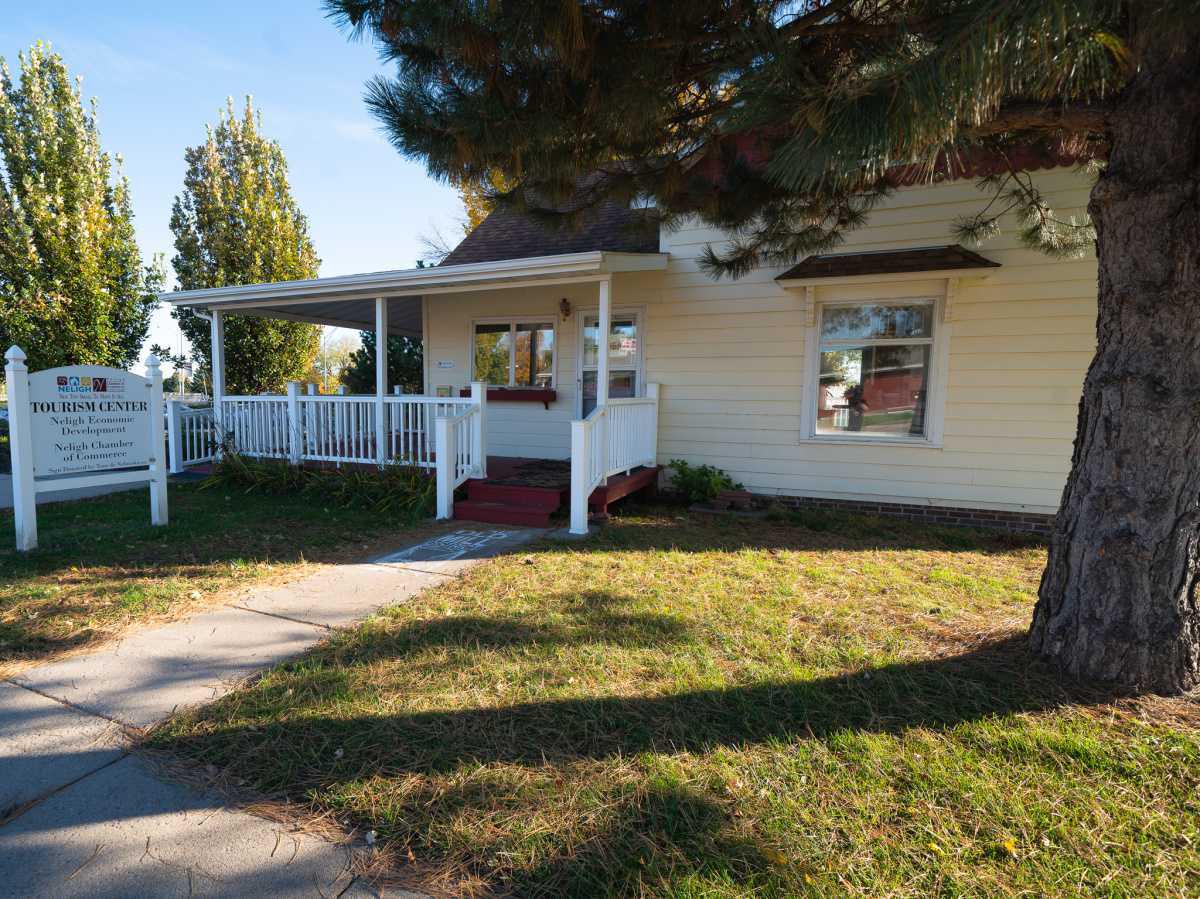
Neligh ED-Chamber Office: Sears & Roebuck House
105 E 2nd St
The hour has arrived. Dad gathers Mom and Sis into the carriage. He hops in the wagon with his brothers to ride off to the railroad station. The day and hour have come to greet the first shipment of your family's brand-new house. All the lumber will be precut and arrive with instructions for your dad and uncles to assemble and build. Mom and Dad picked out No. 140 from Sears, Roebuck and Company's catalog. It will have two bedrooms and a cobblestone foundation, plus a front porch—but no bath. They really wanted No. 155, with a screened-in front porch, built-in buffet, and inside bath (!), but $1,100 was twice as much as Dad said he could afford. In just a few days, the whole family will sleep under the roof of your custom-made Sears Modern Home.
Entire homes would arrive by railroad, from precut lumber to carved staircases, down to the nails and varnish. Families picked out their houses according to their needs, tastes, and pocketbooks. Sears provided all the materials and instructions, and for many years the financing, for homeowners to build their own houses. Sears's Modern Homes stand today as living monuments to the fine, enduring, and solid quality of Sears craftsmanship.
No official tally exists of the number of Sears mail-order houses that still survive today. It is reported that more than 100,000 houses were sold between 1908 and 1940 through Sears's Modern Homes program. The keen interest evoked in current homebuyers, architectural historians, and enthusiasts of American culture indicate that thousands of these houses survive in varying degrees of condition and original appearance.
Sears sold complete houses, including the plans and instructions for construction of 22 different styles, announcing that the featured homes were "complete, ready for occupancy." By 1911, Modern Homes catalogs included illustrations of house interiors, which provided homeowners with blueprints for furnishing the houses with Sears appliances and fixtures.
To advertise the company's new and improved line of building supplies, a Modern Homes specialty catalog, the Book of Modern Homes and Building Plans, appeared in 1908. Sears sold complete houses for the first time, including the plans and instructions for construction of 22 different styles, announcing that the featured homes were "complete, ready for occupancy." By 1911, Modern Homes catalogs included illustrations of house interiors, which provided homeowners with blueprints for furnishing the houses with Sears appliances and fixtures.
It should be noted that suburban families were not the only Modern Home dwellers. Sears expanded its line to reflect the growing demand from rural customers for ready-made buildings. In 1923, Sears introduced two new specialty catalogs, Modern Farm Buildings and Barn. The barn catalog boasted "a big variety of scientifically planned" farm buildings, from corncribs to tool sheds. The simple, durable, and easy-to-construct nature of the Sears farm buildings made them particularly attractive to farmers.
Between 1908 and 1940, Modern Homes made an indelible mark on the history of American housing. A remarkable degree of variety marks the three-plus decades of house design by Sears. A skilled but mostly anonymous group of architects designed 447 different houses. However, each of the designs could be modified in numerous ways, including reversing floor plans, building with brick instead of wood siding, and many other options.
The American landscape is dotted by Sears Modern Homes. Few of the original buyers and builders remain to tell the excitement they felt when traveling to greet their new house at the train station. The remaining homes, however, stand as testaments today to that bygone era and to the pride of home built by more than 100,000 Sears customers and fostered by the Modern Homes program.

